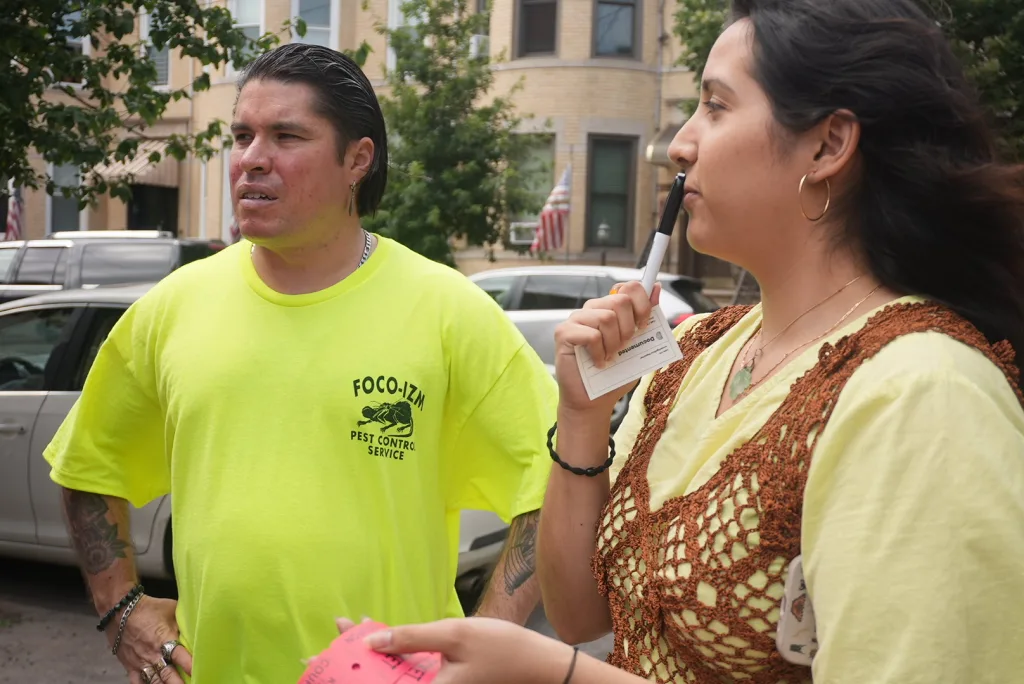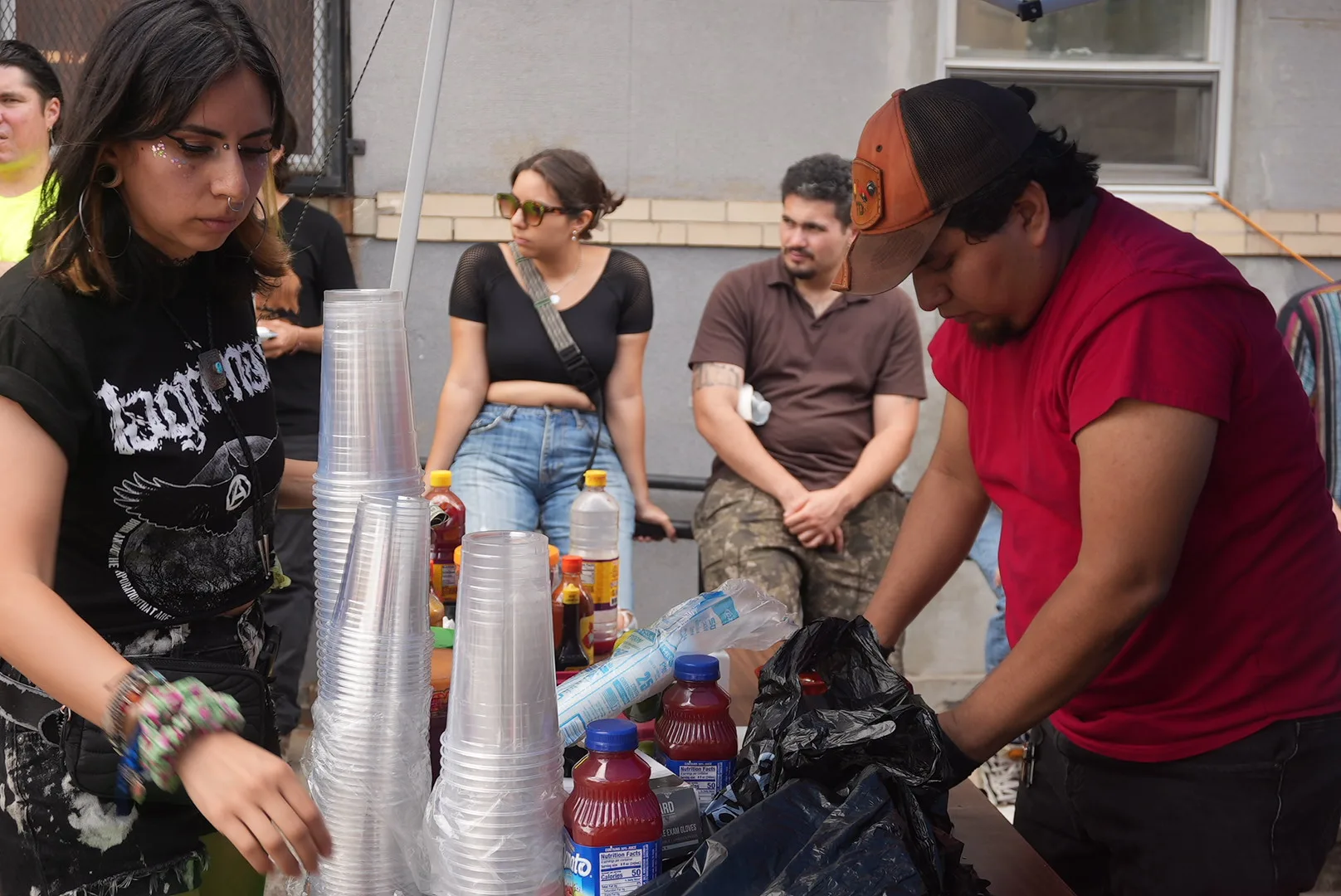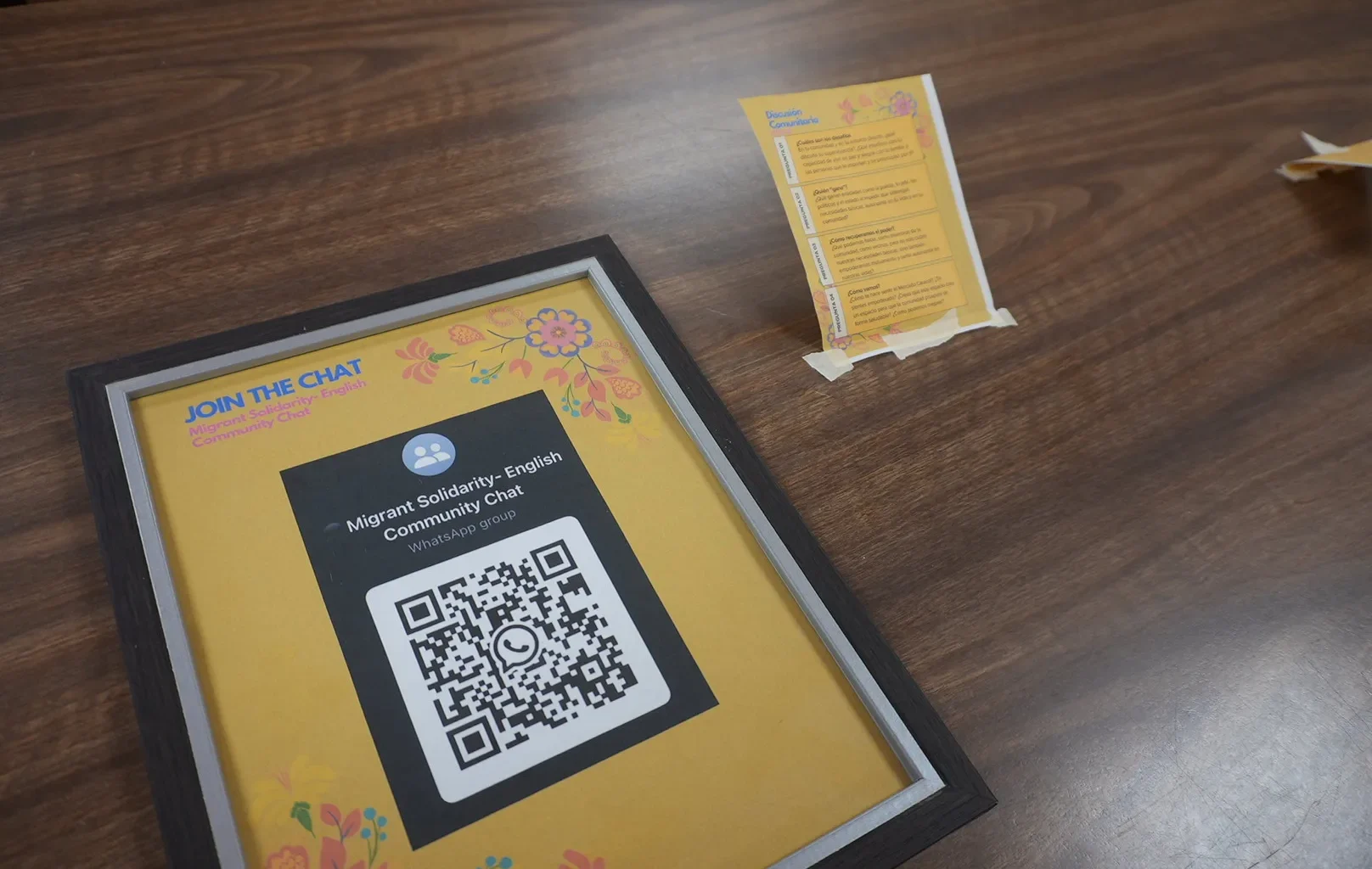When U.S. Immigration and Customs Enforcement agents showed up at the front door of a young immigrant woman in Staten Island, she ran to hide in her closet and went on Instagram. She DM’d @nycicewatch and told them that she had seen ICE agents through her window but did not want to open her door.
One of the Instagram account’s administrators forwarded her message to several group chats with local volunteers in the area. Two headed to the location mentioned by the woman, walking their dogs, and started looking out for ICE agents, ready to film their conduct. By the time they arrived, the agents had left and the volunteers notified the woman.
This is the kind of rapid response team that NYC ICE Watch, or @nycicewatch on Instagram, has been building over the past five years and more actively so since President Donald Trump’s inauguration in 2025. NYC ICE watch was founded in 2020 as part of the Black Lives Matter movement that sprung up around George Floyd’s murder by police. The account has seen a threefold increase in their followers since President Donald Trump’s inauguration, said Tupac, one of the organizers who did not provide his full name due to security issues. The administrators of the account respond to 2-3 user-submitted sightings from Mondays through Fridays when ICE seems the most active. On busier days, the group may receive as many as 8 sightings in their DMs in one day. But that’s only counting sightings that happened within 30 minutes of submission and that also included photos, meaning the group receives many more sightings every day. The group also trains people on how to best document an ICE sighting, using the SALUTE acronym, which requires observers to submit the size of the group of agents, their activity, their location, details about their uniform, the time of the sighting and what equipment was used. The sightings that have been submitted are largely warrant-based, rather than mass raids, said Tupac.
Immigration News, Curated
Sign up to get our curation of news, insights on
big stories, job announcements, and events happening in immigration.

Please check your email for further
instructions.
 Nacho Conde-Farley and Adriana Guillen discussing how to set up the raffle at the event. Each raffle helps raise funds for the group’s work with street vendors. Photo: Lam Thuy Vo for Documented
Nacho Conde-Farley and Adriana Guillen discussing how to set up the raffle at the event. Each raffle helps raise funds for the group’s work with street vendors. Photo: Lam Thuy Vo for Documented
“Having a network like ICE watch allows us to respond as neighbors,” said Megan Welch, a 34-year-old volunteer with NYC ICE Watch in Staten Island where she coordinates events and rapid responses.
The group tries to verify the reports, like making sure that what was sent shows an actual ICE agent rather than a police officer, and alerting rapid response groups when intervention might be needed. But primarily, Welch said, NYC ICE Watch is based on mutual aid. Volunteers from the group organize in their local neighborhoods to provide accompaniment to court or spaces where their neighbors don’t feel safe going on their own. But group members may also help with everyday needs such as childcare or paying for groceries. Hundreds of volunteers have signed up to neighborhood group chats in all boroughs of New York City and parts of New Jersey, said Welch, each group having between 20 and 50 members.
“Times are bleak, but our relationships aren’t. ICE Watch gives me hope,” said Welch.
The volunteers behind the @nycicewatch account are some of many mutual aid organizers around the city and nationwide that have mobilized in the wake of ICE’s ever more aggressive crackdown on immigrants in the country. Digital organizers are responding to the sharp increase in ICE arrests of immigrants by coalescing people in real life: they put on know-your-rights workshops, organize rapid response teams and work with or provide other mutual aid to their immigrant neighbors.
To Nachi Conde-Farley, 33, a volunteer with a mutual aid group called NYC Migrant Solidarity, being local and showing up consistently was always part of their volunteer work. He started bringing together his neighbors in 2023 when sweep notices were put up in his neighborhood — notices from the department of sanitation that serve as a warning that street cleanliness rules may be enforced.
NYC Migrant Solidarity has been building relationships with street vendors throughout the past 2-3 years, providing ad hoc aid such as fundraising to make up losses from confiscated goods, and has been putting on a monthly street market where vendors can sell goods without fear of being ticketed.
They have also provided support for vendors who were arrested and have brought together community members when police tried to throw out produce from vendors or tried to ticket them.
“They helped me a lot,” said Flor Ramirez, 35, a vendor who was selling ceramics and other goods from Mexico at the market on Saturday. She was fined $250 for selling goods on Knickerbocker Avenue back in February of this year. She said that the mutual aid organizers helped her pay her ticket so she could retrieve her goods from authorities.
Volunteers for the group have not seen large scale raids by ICE, but rather heard of arrests based on warrants in their neighborhood, said Conde-Farley.
This kind of work naturally extends to run-ins with other authorities like ICE, though Conde-Farley said that tensions in the neighborhood have been rising, as the Trump administration has emboldened people to be more hostile to street vendors.
 People purchasing beverages from a vendor at the Mercado Caracol that NYC Migrant Solidarity organize every month at Ridgewood Presbyterian Church. Photo: Lam Thuy Vo for Documented
People purchasing beverages from a vendor at the Mercado Caracol that NYC Migrant Solidarity organize every month at Ridgewood Presbyterian Church. Photo: Lam Thuy Vo for Documented
Many groups are also building coalitions: Pro-Palestinian protest groups, tenant unions and neighborhood mutual aid groups are jointly posting promotional photos on Instagram for events they co host and building informal networks between one another, one event at a time.
“All of these different community hubs are trying to strategize around this emerging crisis, and it’s important for us all to be talking to each other, so we’re trying to build out first like coalition meetings between different groups,” said Amadi Ozier, 32, a volunteer and educator with NYC Block Watch. “And then we’re also, like, leading workshops with different community groups.”
NYC Block Watch has been running ‘Know Your Rights’ workshops as well as workshops on de-arresting (helping people who have been arrested as a result of a protest) and organizing rapid response groups with dozens of other organizations. Ozier says that NYC Block Watch has trained people from all walks of life — from elderly community gardeners to neighbors in a building who all have a group chat and organize themselves around package theft, primarily in Brooklyn, Lower Manhattan and Harlem. She said working with mutual aid groups brings people from all backgrounds together — tenants, unhoused people, young new residents and long-term residents.
“Really like the goal is to try to raise everybody’s basic level of confidence with how to respond to these social crises,” said Ozier.

